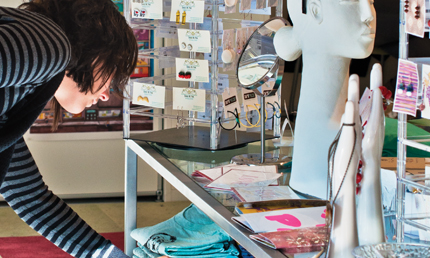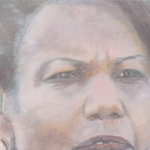By Tara Plath
Academic advising for undergrads will undergo a drastic transformation next year. SAIC administrators have said they’re themselves ready to address issues raised by students.
For the first time, sophomores will also have advising requirements, in addition to freshmen, offering “a little bit more structure and support,” said Debbie Martin, Dean of Student Life. Incoming transfer students will also be assigned advisors, another change in the department.
Transfer student Bill Cleveland says advising was important for his student experience. “When I transferred I was really directionless for awhile. I knew what I wanted to do, but was having difficulty forming a path or plan. Advisors like Surabhi Ghosh were very important in getting me into classes that were essential for my work as an artist, as well as fulfilling my requirements for graduation,” he said.
One of the main goals of these changes is to provide “ongoing advising and mentorship through a close relationship between faculty and students,” says Joan Livingstone, Dean of Undergraduate Studies.
If the relationship between advisors and students has been one perceived problem, another is inadequate advisor training. Third-year Visual Communications student Mona Luan says, “I never used Academic Advising [during my freshman year]. I used them when it was mandatory, and my advisor was completely unhelpful and knew less about my credits than I did. I haven’t used them again after that.”
Currently, the academic advising office houses 14 part-time faculty members as advisors. They each work one day a week, making it difficult for a student to schedule an appointment without missing class. Advisors are assigned to students in their freshmen year, but after the initial meeting with the assigned advisor, it is not necessary to see him or her again. In fact, given scheduling challenges, it’s very rare that a student consistently meets with the same advisor. According to Martin, this was identified as an issue years ago.
As of next year, the Academic Advising office will have advisors drawn from a variety of disciplines, including writers, recent graduates, and art historians. While Martin admits that the idea of a sophomore advising requirement has been in the works for five or six years now, she attributed slow progress to limited resources.
Lisa Wainwright, Vice President of Academic Affairs and Dean of Faculty, echoed Martin’s sentiment. When she first came to SAIC, Wainwright said she was shocked by the Academic Advising program: “I thought every undergraduate should have an assigned faculty advisor.” She tried to encourage assigning specific advisors to every student, but says the endeavor was “a mess.” Fifteen years later, those changes are finally materializing.
In addition to offering sophomore advising, Wainwright has also worked with Livingstone and Academic Advising to pilot a new sophomore seminar this spring semester. They hope the seminar will meet the need for advising after the first year.
The spring pilot will offer seven sections of an optional sophomore seminar before being officially implemented next year as a requirement. The class will be a three-hour studio seminar. A possible assignment might revolve around “re-crits” of students’ work from other classes, with the opportunity to redo the piece.
First-year student Andrea Chiu compared the idea of the sophomore seminar to the first-year program. “I personally really enjoy my research and core classes,” she said. “They create structure and instill knowledge that affects my other classes as well. I think [the sophomore seminar] will be a good idea.”
The seminar consists of several projects that explore a common analytical method, contemporary themes in art, and how they relate to the student’s work. Additionally, the seminar will bring in writing fellows and other faculty members as guest lecturers and teachers. The class is meant to ensure “students graduate with skills to write grants and articulate [their work],” Wainwright said. Teachers will work in conjunction with academic advisors to establish a stronger support system for students as they enter their second year. The faculty will get training in academic advising skills.
SAIC’s retention rate is 76% from first to second year, according to Martin — but this isn’t the only reason for these changes. “It’s not that we want to improve retention rates, we want to improve the student experience,” she says. Students who choose to leave after freshman year “could have gotten more connected and found a way to create a better experience.” The new program will act as a “foundation to improving the student experience, which can lead to a higher retention rate.”
Martin says that SAIC’s retention rate, while lower than the rates at many other art schools, is higher than the national average. “We did have an improvement this past year, from 75% to 76%. That 1% is really important,” said Livingstone. She also said that second to third year retention rates were a problem as well, which they hope the new seminar will also improve.
Across the board, the general consensus is the same: academic advising has not been reaching enough students. “I think that part of the issue is that [students] don’t know what we have to offer. … we can do better in getting that information out there. Part of this is we just haven’t had the staff,” said Nicole Osborne, Assistant Dean of Academic Advising.







